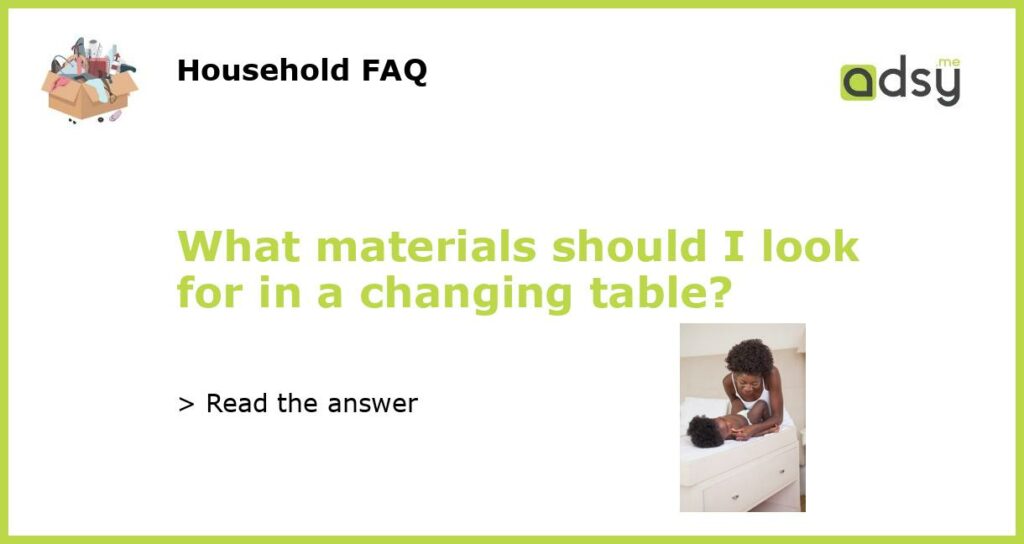5 materials to consider when choosing a changing table
Choosing a changing table that suits your needs as a parent means considering several factors, including size, storage, and overall style. Another essential consideration is the material used to manufacture the table itself. Here are five of the most popular materials used for baby changing tables, and the pros and cons of each option.
Wood
Wooden changing tables are a classic choice that can fit into nearly any nursery decor style. They are often made from solid wood or engineered wood and can offer durability and a long lifespan. However, wooden tables can be expensive, heavy, and may require more maintenance than other materials. Additionally, some types of engineered wood can release formaldehyde as they age, which can be hazardous for your baby’s health.
Metal
Metal changing tables can offer a sleek, modern look to a nursery. They are often lightweight, making them easy to move around or adjust as needed. However, metal tables may not have as much storage capacity as other materials, and their surfaces can get cold, which may be uncomfortable for your baby during a diaper change.
Plastic
Plastic changing tables are a popular choice for parents who want a durable, easy-to-clean option. They often include storage space underneath the table and can be lightweight and affordable. However, some plastic materials can contain harmful chemicals like BPA or PVC, so it’s essential to do your research to find non-toxic options.
Wicker or rattan
Wicker and rattan changing tables can offer a unique, bohemian aesthetic to a nursery. They are often lightweight and can be designed with plenty of storage options. However, these materials can be fragile and may not stand up well to constant use or exposure to moisture. Additionally, wicker and rattan tables may not be as easy to clean as other materials.
Fabric
Fabric changing tables can be a portable option for parents who want to have a designated changing space that can be moved around the house easily. They can be designed with multiple pockets or compartments for storage, and their soft surfaces can be more comfortable for your baby. However, fabric tables may not be as durable as other options and can be challenging to wipe down and clean thoroughly.
No matter which material you choose, it’s important to make sure that the table is sturdy, safe, and fits your needs as a parent. With the right materials and design, your changing table can be an essential and practical addition to your nursery decor.






